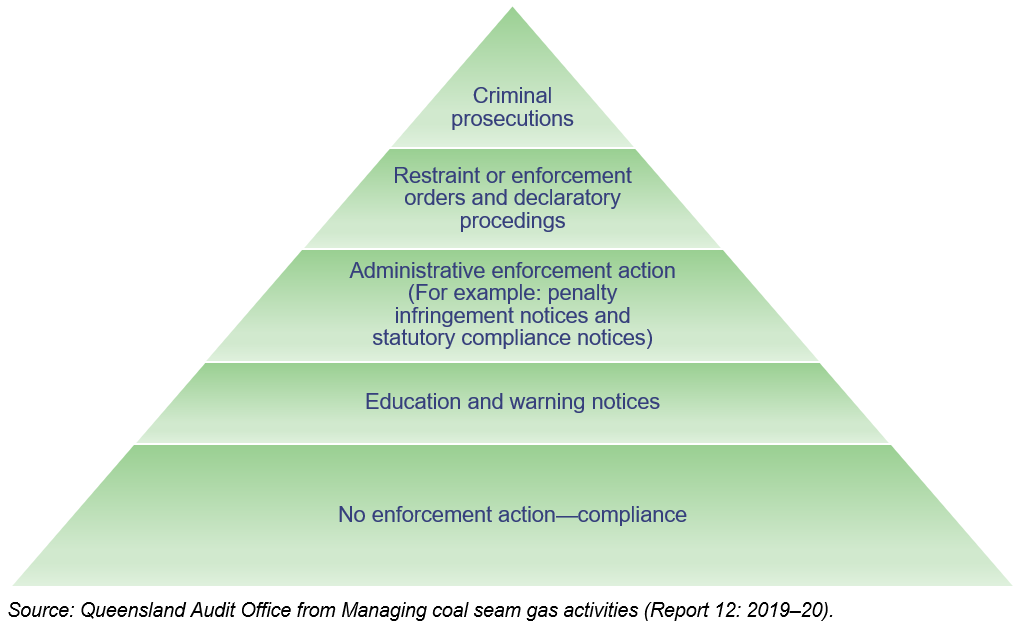Regulation is a core function of government, ensuring services that touch all our lives are safe and fair. Regulators need to plan their compliance and monitoring programs well, but this provides little value if they do not act on their plans.
To be effective, regulators need to ensure they are both proactive – acting to implement their compliance monitoring and enforcement plans – and reactive – acting on complaints and identified non-compliance.
This blog article is the second in our series of 3 articles on better practices for regulators. You can read our first blog, Better practices for regulators – plan to be intelligence-led, here. In 2023, we will publish the third article in this series on the other better practice principles of reporting and continuous improvement.
We aim to shine a light on the importance of regulation as a key function of government. Last year, we wrote to all public sector regulators and oversight bodies and recommended they self-assess their regulatory approaches against the better practices we published in Regulating animal welfare services (Report 6: 2021–22). This includes, where necessary, implementing the changes needed to enhance their regulatory performance. The results will be included in our 2023 report on Status of Auditor-General’s recommendations.
Clear communications can support compliance
Regulators should communicate key expectations to entities being regulated so they know what is required. A regulatory compliance framework can help with this by:
- clearly articulating expectations for reporting requirements, inspections, or other compliance activities
- setting time frames for decisions, so it’s clear what criteria will be applied and how many business days they can expect to wait for a decision
- explaining the underlying reasons for why decisions are made
- documenting the proportionate responses available to ensure compliance.
This will help regulated entities understand what is expected of them and how best to achieve the desired compliance outcomes.
Insight Establishing and communicating a clear framework can assist regulators and guide staff in how to act on identified non-compliance appropriately and proportionately. It provides regulated entities with an understanding of how their regulator will address non-compliance. |
Act proportionately and follow up to achieve compliance
The figure below provides an example of an enforcement continuum approach. Depending on the type and nature of non-compliance identified, the regulator may act by trying to educate or warn the non-compliant entity and progress to higher levels of enforcement if the non-compliance is not addressed. In other situations, the circumstances or nature may warrant the regulator moving directly to enforcement orders or prosecutions.
After taking action to address non-compliance, it is important for the regulator to follow through and make sure the regulated person or organisation has become compliant. This does not always occur. In some of our previous audits, we found the regulator often failed to perform the necessary follow-up to ensure regulated entities rectified the non-compliance.
Insight Regulators should establish processes to ensure staff not only act when they identify non-compliance but follow through to ensure the non-compliance issue is subsequently rectified. The regulator’s primary outcome being sought should be to bring the regulated entity to compliance. |
Coordinating with other regulators can reduce the burden
Some industries are subject to multiple regulatory frameworks, often enforced by more than one regulator. All too often where this occurs, we find that individual regulatory bodies plan and conduct their activities in isolation, resulting in limited information sharing, duplication, inefficiency, and client frustration. To ensure equitable services, regulators need to be consistent in their interpretation and application of the legislation.
In previous reports, we have recommended regulators implement consistent processes, clear communication, and collaboration when more than one entity delivers a regulatory service. To address these recommendations, one of the regulators established a dedicated office to provide oversight and coordination across multiple regulators. This led to consistent and documented processes for compiling and sharing information, making decisions, and managing the compliance program.
Insight Where more than one public sector entity contributes to enforcing the regulatory environment, regulators should collectively work towards developing consistent and complementary approaches to legislative compliance and enforcement. |
Critically, good regulatory practices can minimise failures and harness opportunities for improvement, which is a fundamental role of government. The insights and guidance in our reports and blogs can help entities improve their regulatory practices, which can result in better outcomes and services for Queenslanders.



